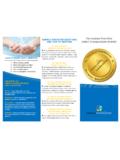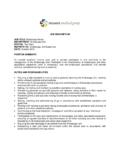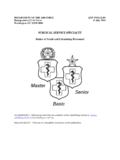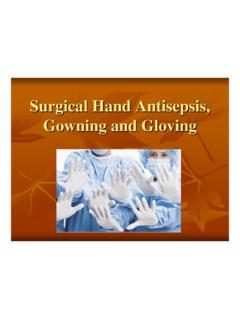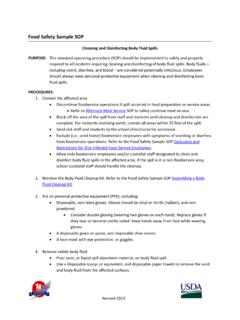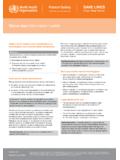Transcription of Policies and Procedures Policy No.: Cross Reference ...
1 Administrative Policies and Procedures Originating Venue: Infection Control Policy No.: IC 2305 Title: Clostridium Difficile Infection Control Policy Cross Reference : Date Issued: 02/14 Date Reviewed: 02/14 Date: Revised: 09/03/14 Attachment Page 1 of 1 Purpose: Clostridium difficile (C. difficile) is a spore-forming, gram-positive anaerobic bacillus that produces two large exotoxins (toxin A and toxin B), which cause diarrhea and colitis in susceptible patients whose normal colonic bacterial flora has been previously disrupted by prior antimicrobial treatment.
2 Diseases that result from C. difficile infection include pseudomembranous colitis, toxic megacolon, perforations of the colon, sepsis, and very rarely death. The main clinical symptoms of C. difficile include: Watery diarrhea Fever Loss of appetite Nausea Abdominal pain/ tenderness Risk factors of C. difficile infection include: 1. Patients with antibiotic exposure 2. Gastrointestinal surgery/ manipulation 3. Long length of stay in a healthcare setting 4. A serious underlying illness 5. Immunocompromising conditions 6. Advanced age Policy : C. difficile is shed in feces and the ability of the organism to produce spores enables it to survive for months in the environment of healthcare settings. Any surface, device, or material ( , toilets/commodes, stretchers, and door knobs) that becomes contaminated with feces may serve as a reservoir for C.
3 Difficile spores. These spores are transferred to patients mainly via the hands of healthcare personnel who have touched a contaminated surface or item. Because C. difficile spores are not killed by alcohol, washing hands with soap and water (while applying friction) is highly important. Environmental hygiene is also highly important as C. difficile spores will contaminate surfaces unless properly disinfected. C. difficile spores are removed best when using a bleach product in conjunction with friction. Procedure: Prevention and control of C. difficile spore transmission to patients can be accomplished through good hand hygiene, gloving, barrier precautions, and thorough environmental cleaning. If a patient is positive for C. difficile, place the patient on contact precautions. A private room with designated toilet is indicated.
4 Isolated patients should not share bathrooms. Title: Clostridium Difficile Infection Control Policy Policy No.: IC 2305 Page 2 of 2 Gloves and gowns are both required at all times upon room entry; change gown if soiled and remove gown before leaving patient's exam room, or procedure room. Change gloves after contact with infectious material that may contain a high concentration of microorganisms. Perform hand hygiene with soap and water for a minimum of 15 seconds after removing gloves and before leaving room. All patient equipment, stretcher, exam table, over bed table, blood pressure cuff, patient monitoring equipment, IV poles, bathroom sink, toilet and any other items that may have potentially come in contact with the patient or items contaminated with the patient s body fluid, should be disinfected with a bleach and water solution, following routine cleaning.
5 Medical instruments/equipment need to be disinfected according to manufacturer s recommendations with a sporicidal agent. Date Policy to be reviewed: 09/15
